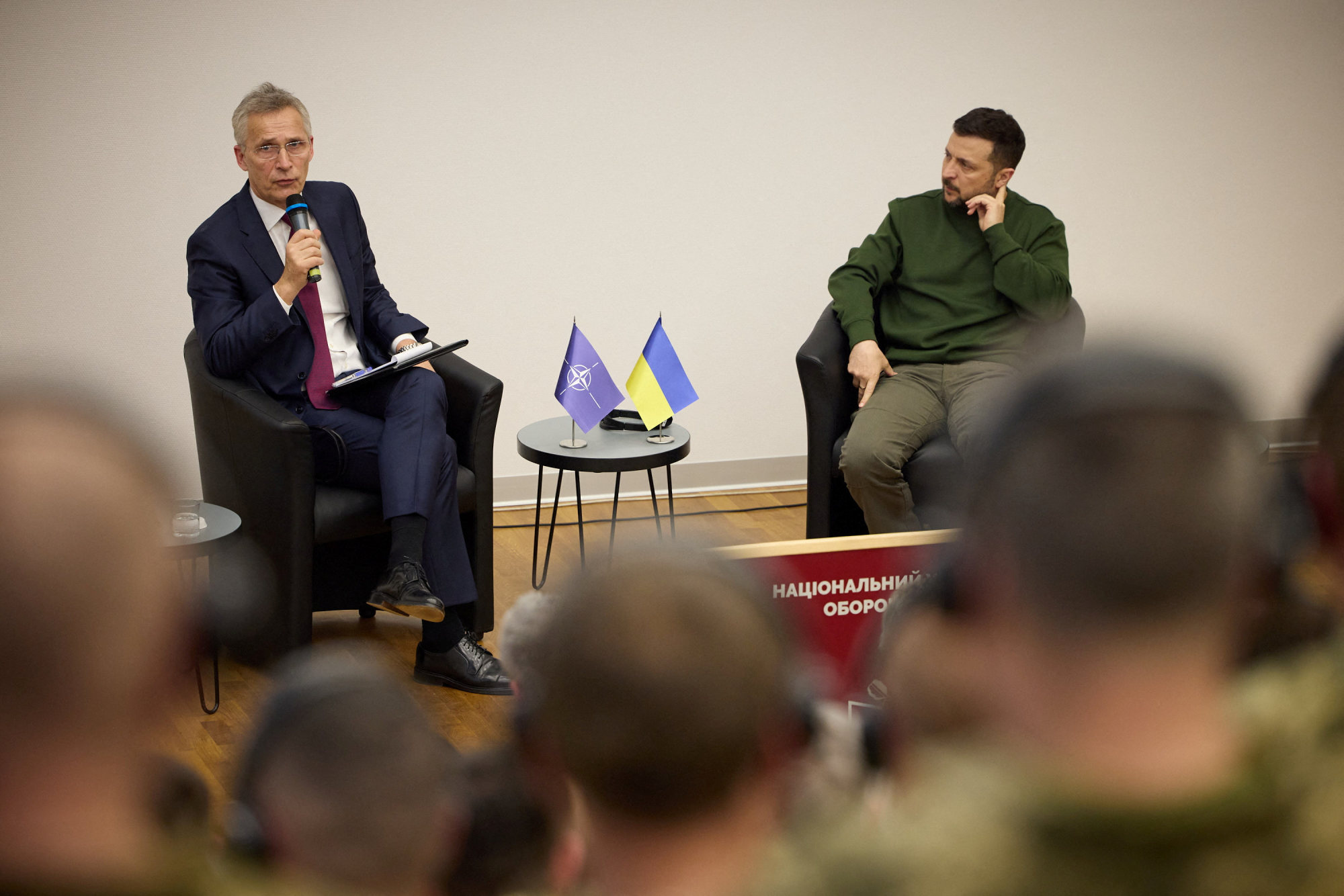
Nato chief chides members as Ukraine’s allies say slow arms deliveries have helped Russia
- ‘Serious delays in support have meant serious consequences on the battlefield’ for Ukraine, said Nato Secretary General Jens Stoltenberg in Kyiv
- Kyiv’s Western partners have vowed to stand with Ukraine but vital US military aid was held up for six months by political differences in Washington
Nato countries have not delivered what they promised to Ukraine in time, the alliance’s chief said on Monday, allowing Russia to press its advantage while Kyiv’s depleted forces wait for military supplies to arrive from the US and Europe.

“The lack of ammunition has allowed the Russians to push forward along the front line. Lack of air defence has made it possible for more Russian missiles to hit their targets, and the lack of deep strike capabilities has made it possible for the Russians to concentrate more forces,” Stoltenberg said.
Kyiv’s Western partners have repeatedly vowed to stand with Ukraine “for as long as it takes”. But vital US military help was held up for six months by political differences in Washington, and Europe’s military hardware production has not kept up with demand. Ukraine’s own manufacturing of heavy weapons is only now starting to gain traction.
Zelensky said new Western supplies have started arriving, but slowly. “This process must be speeded up,” he said at the news conference with Stoltenberg.
Though the 1,000-km (600-mile) front line has shifted little since early in the war, the Kremlin’s forces in recent weeks have edged forward, especially in the Donetsk region, with sheer numbers and massive firepower used to bludgeon defensive positions.
Duchess Sophie visits Ukraine in first trip by British royal since start of war
Russia also continues to launch missiles, drones and bombs at cities across Ukraine. At least four people were killed and 27 injured in a Russian missile strike on residential buildings and “civil infrastructure” in the southern Ukrainian port city of Odesa on Monday, regional governor Oleh Kiper said on the Telegram messaging site.
A turreted Gothic-style building known locally as the “Harry Potter Castle” was seen in flames after the strike.
Drawn-out Ukrainian efforts to mobilise more troops, and the belated building of battlefield fortifications, are other factors undermining Ukraine’s war effort, military analysts say.
Nick Reynolds, a research fellow for land warfare at the London-based Royal United Services Institute, said the war “is still largely an artillery duel”.
He said he did not expect to see major movement of the front lines in the near term, but that “the conditions are being set for which side has military advantage at the front line. The Russian military is in a better position at the moment.
Ukraine army chief warns of front line pressure, as forces wait for US aid
“When we see one side or the other being in a position to move the front line, at some stage, manoeuvre will be restored to the battlefield. Not in the next few weeks, maybe not even in the next few months. But it will happen,” he told Associated Press.
Pentagon spokesperson Sabrina Singh, at a briefing with reporters on Monday, also acknowledged Russia’s recent battlefield gains, noting that a delay in congressional approval for additional spending “set the Ukrainians back”.
Stoltenberg, however, said more weapons and ammunition for Ukraine are on the way, including Patriot missile systems to defend against heavy Russian barrages that smash into the power grid and urban areas.
Ukrainian officials say Russia is assembling forces for a major summer offensive, even if its troops are making only incremental gains at the moment.
“Russian forces remain unlikely to achieve a deeper operationally significant penetration in the area in the near term,” the Institute for the Study of War said in an assessment Sunday.
Even so, the Kremlin’s forces are closing in on the strategically important hilltop town of Chasiv Yar, whose capture would be an important step forward into the Donetsk region.
Donetsk and Luhansk form much of the industrial Donbas region, which has been gripped by separatist fighting since 2014, and which Putin has set as a primary objective of the Russian invasion. Russia illegally annexed areas of Donetsk, Kherson, Luhansk, and Zaporizhzhia regions in September 2022.


